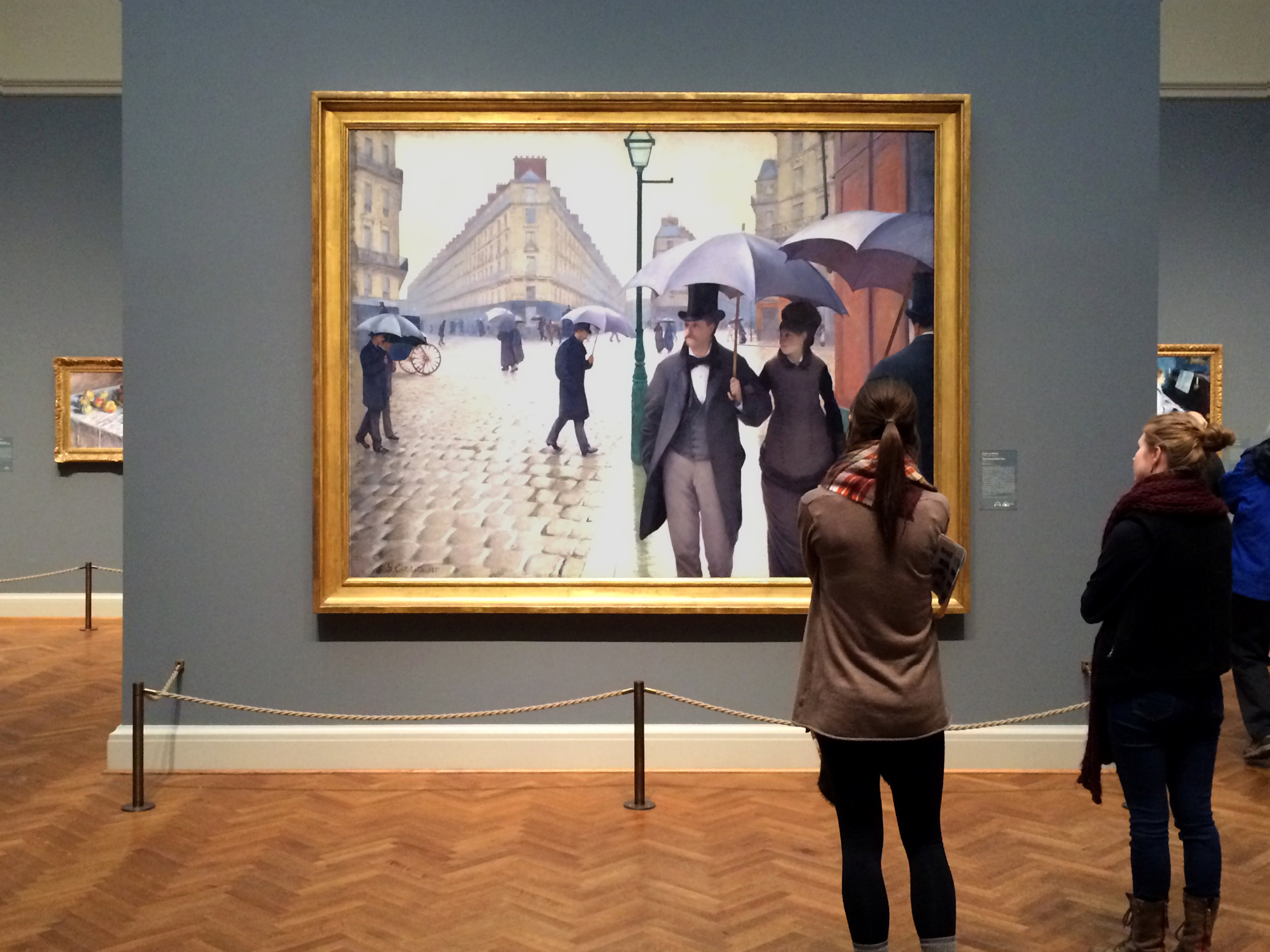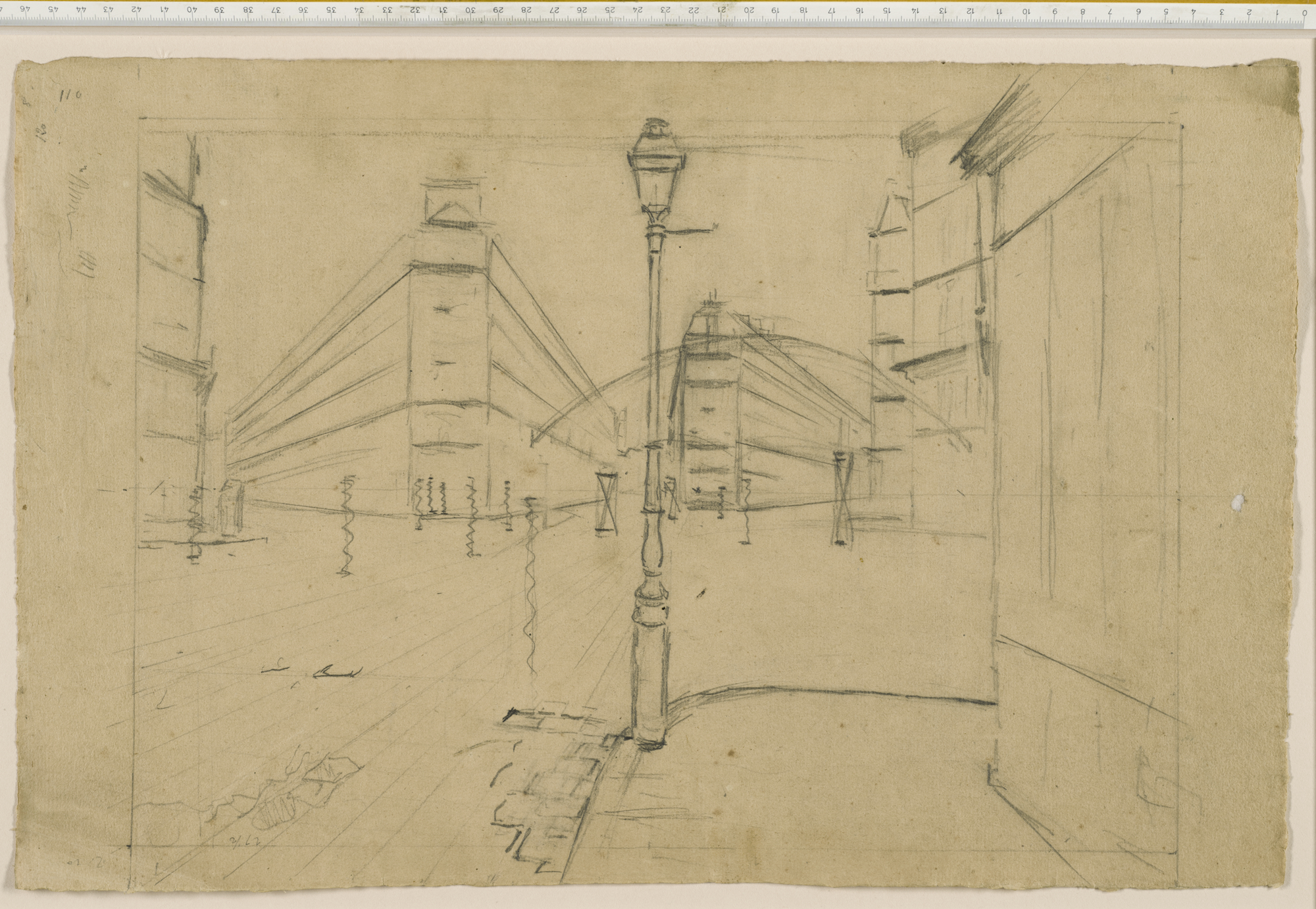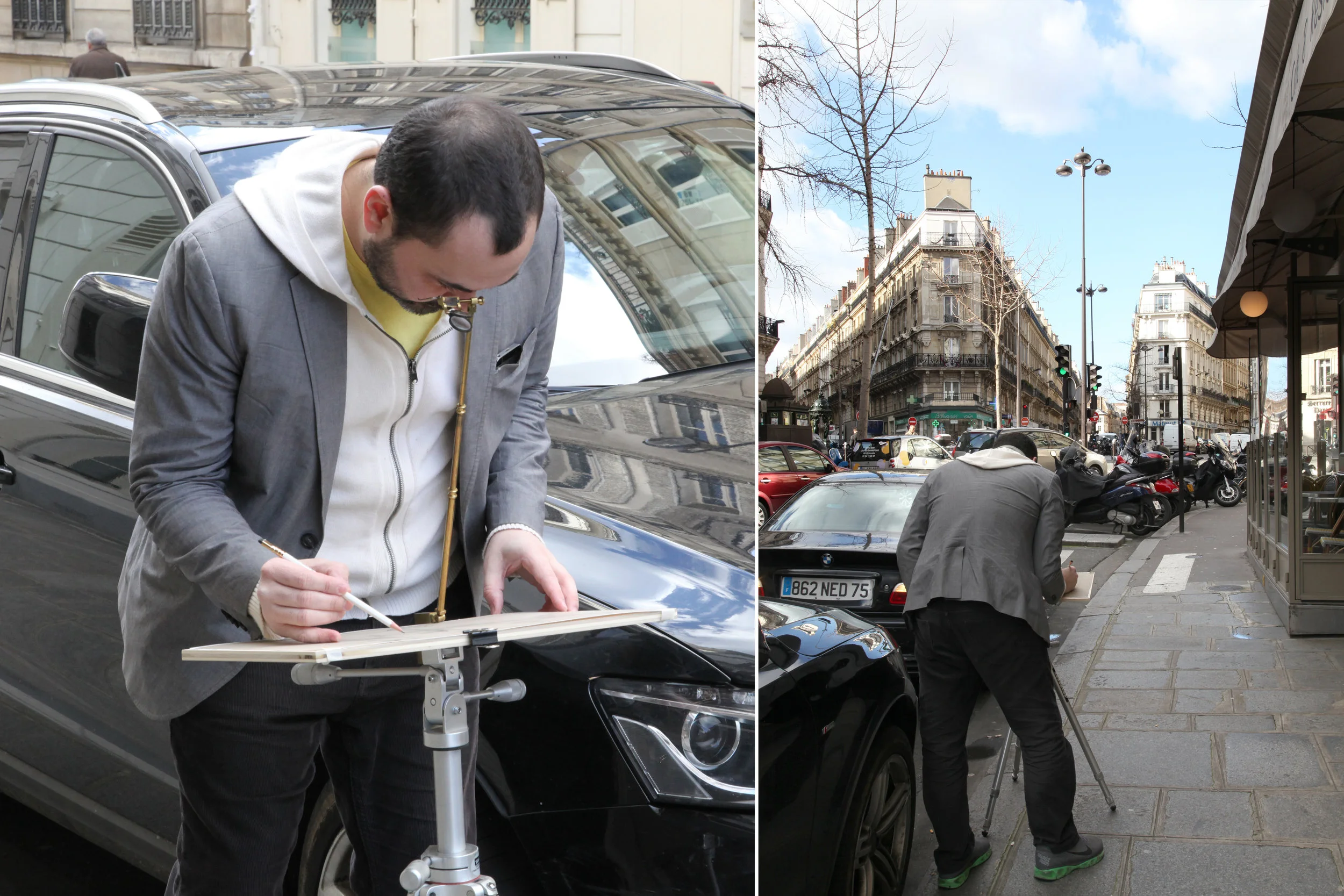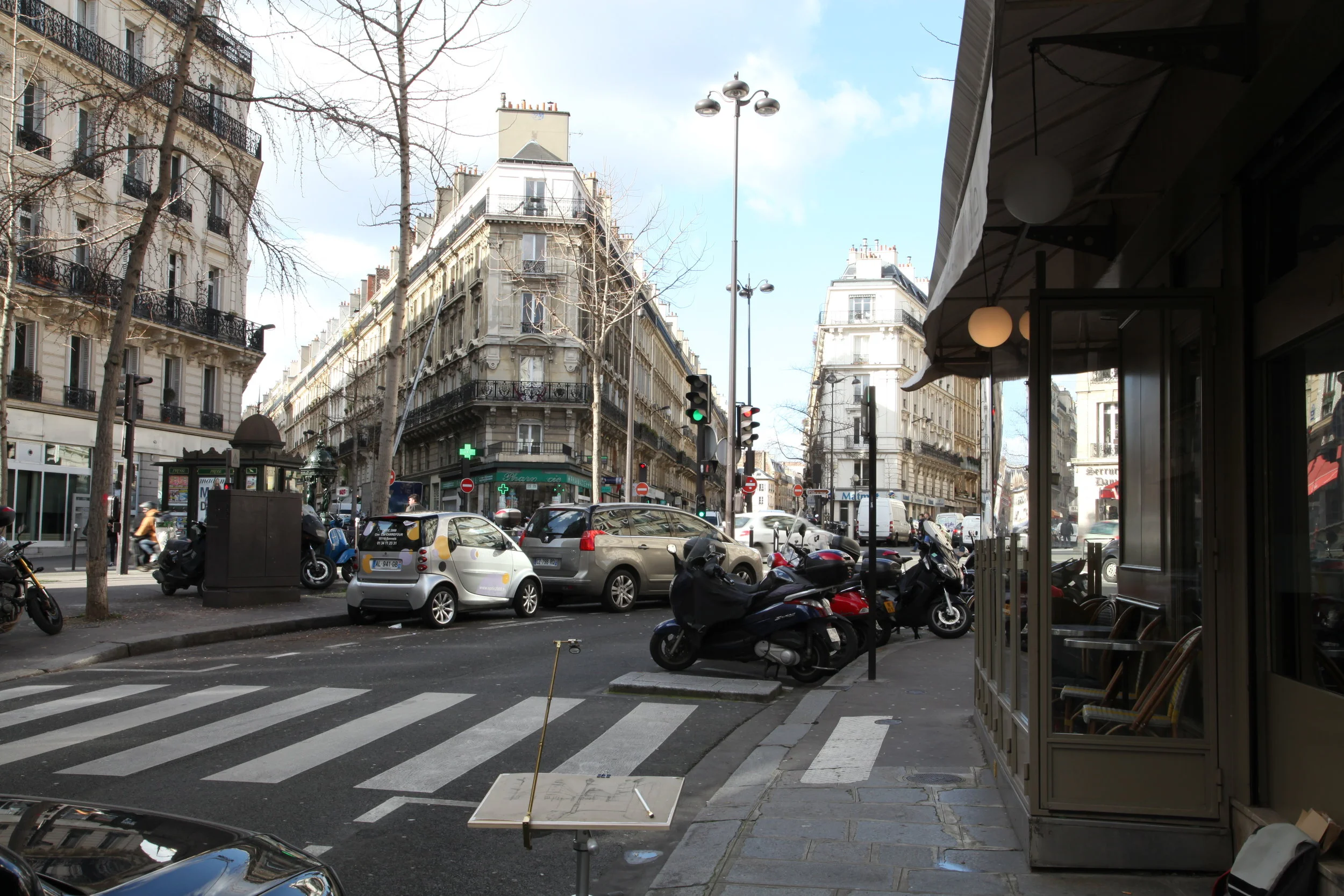Paris Street; Rainy Day
Gustave Caillebotte, Paris Street; Rainy Day, 1877 exhibited at the Art Institute of Chicago. At 7′ 10″ x 6′ 1″ (239 x 185cm), the foreground figures are life-size and feels like you can just walk into the scene.
Did Gustave Caillebotte use a camera lucida to make his masterpiece Paris Street; Rainy Day? Working with researchers at The Art Institute of Chicago, I went to Paris to find out.
Gustave Caillebotte’s Paris Street; Rainy Day, painted in 1877, is one of the painter’s masterpieces and at the center of the Art Institute of Chicago collection. At nearly nine feet wide, the painting’s foreground figures are life-size and the deep perspective invites you to step into the frame.
Several years ago, the Art Institute acquired a preparatory drawing for the large canvas. It is a humble drawing without the significant artistry present in the painting. The major feature of the drawing is that, when scaled to the painting, the perspectival geometry precisely matches the large canvas.
This feature raised the attention of the curators and conservators at the museum. They began to suspect that Caillebotte may have used optical drawing aids in producing the drawing. Additonally, the drawing contains small pin-pricks, likely indicative of drafting tools used to transfer the small drawing to the large canvas.
The Art Institute asked me to investigate and consult on the processes Caillebotte used in making his masterpiece. After weeks of close study and testing, I determined Caillbeotte likely made the painting in two important steps. First, he used a camera lucida to make the preparatory drawing on the streets of Paris. Next, he used architectural drafting techniques to transfer the geometry onto the large canvas before beginning to paint.
To illustrate this process, I recreated Caillebotte’s painting in two phases. First, I traveled to Paris with one of my vintage camera lucidas to replicate his preparatory drawing. Second, back in Chicago, I used drafting tools to manually transfer the small drawing to a full-size canvas, creating a one-to-one replica of the final canvas’ underdrawing.
Link: Gustave Caillebotte Online Scholarly Catalog
This project is part of The Art Institute of Chicago’s Online Scholarly Catalogue Initiative, producing in-depth and public monographs about the major works in the museum’s collection.
Gustave Caillebotte, Study drawing for Paris Street; Rainy Day, collection The Art Institute of Chicago. This rough drawing scales up perfectly to the painting.
On the Rue de Turin in Paris, I set up my vintage camera lucida to test whether the Caillebotte drawing aligns with the scene.
From the Art Institute of Chicago Online Scholarly Catalog for Caillebotte, I explain the process of locating the precise spot Caillebotte located his camera lucida for the preliminary study drawing.
Once the alignment was confirmed on Rue de Turin, I began the process of using drafting tools to transfer the study drawing to a large canvas. This tests the methods Caillebotte may have used to create the final full scale painting.






